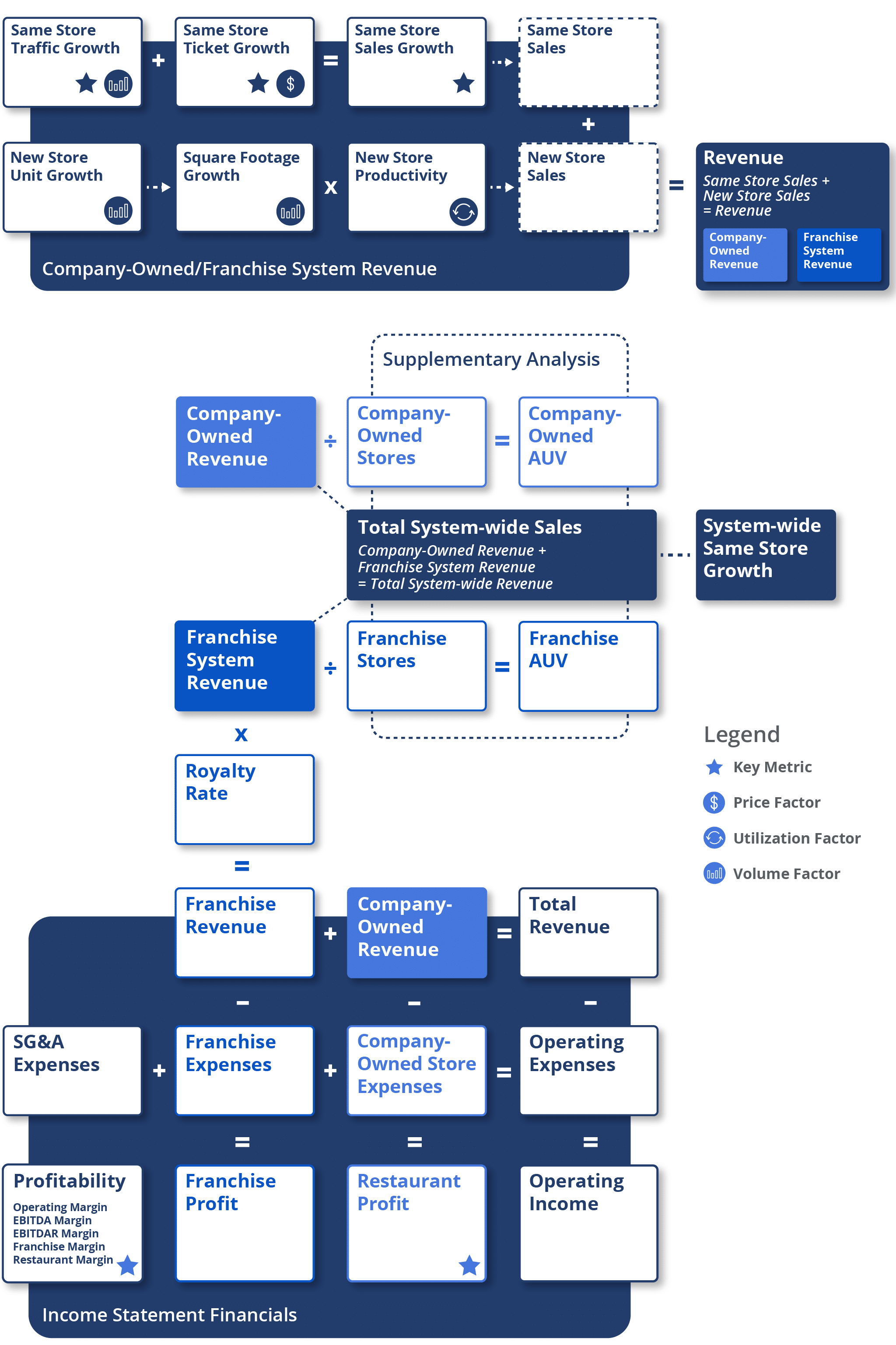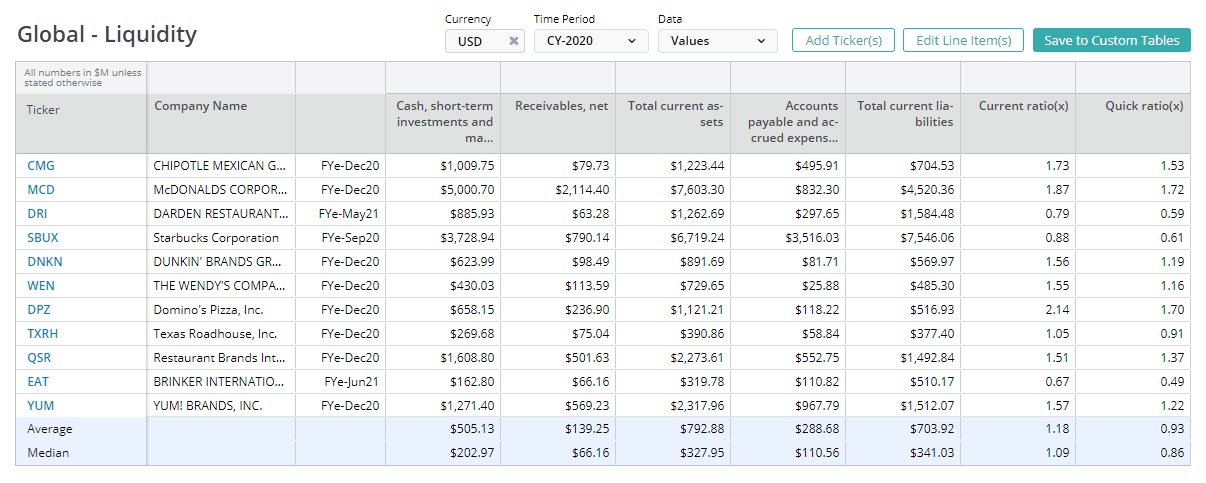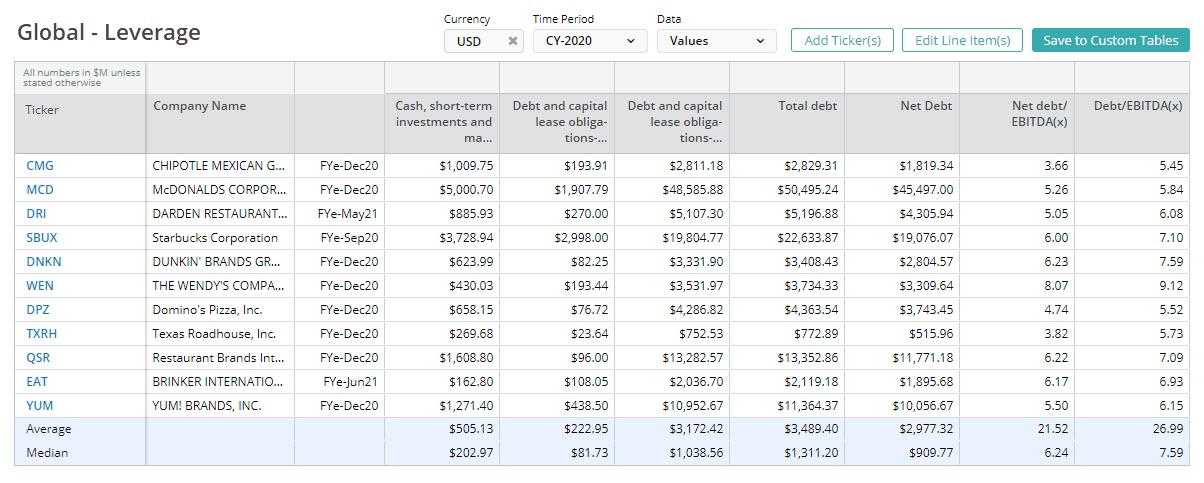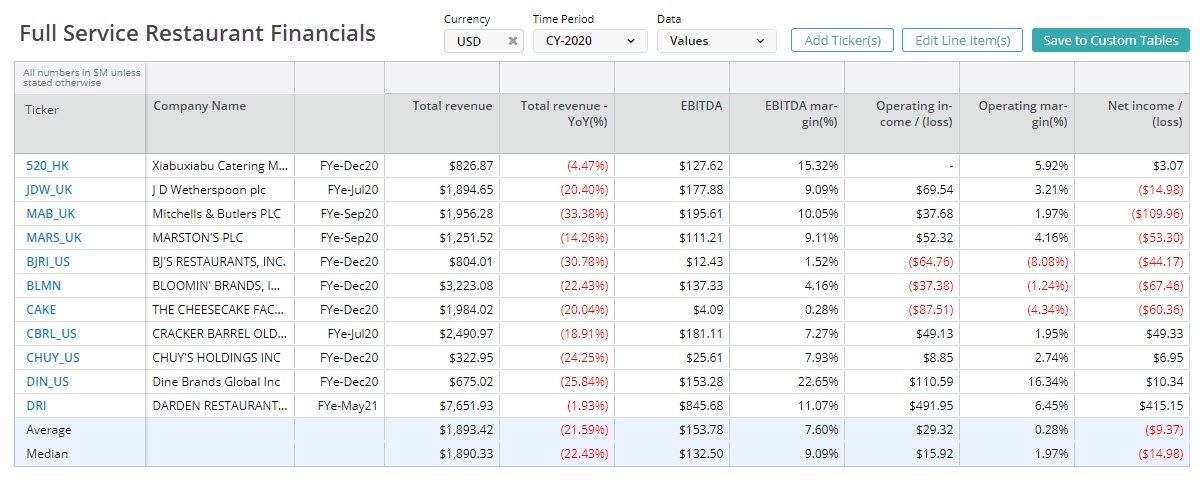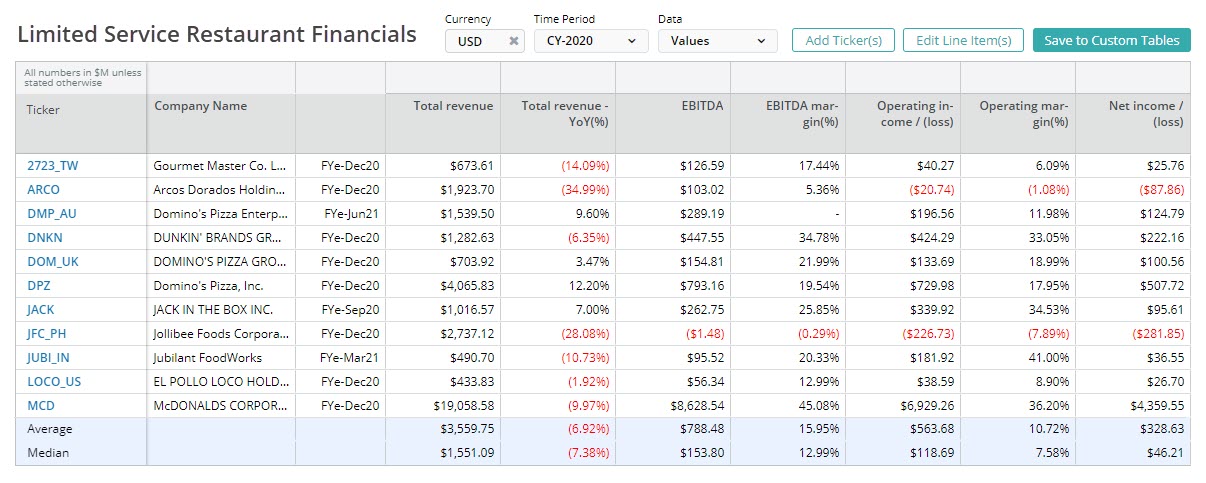Sales growth at stores open for at least 12 months. Also called comparable store sales growth, comps or SSS.
Restaurants & Bars Business Model
Restaurants generally have company-owned restaurants and franchised restaurants. Modeling both types of stores can look very similar, depending on the completeness of disclosures from the company. For both types of stores, investors often divide the entire store base into two buckets: one devoted to stores that have been open for 12 months or longer – called “same stores” – and the other for stores that have opened within the last 12 months – called “new stores.”
Same stores are scrutinized heavily as their trends are considered to be more representative of the underlying trends of the company as a whole. Same store sales growth is a key metric and measures sales growth among stores open 12 months or longer. Same store sales growth can be broken down into two general components: same store traffic (the number of people coming into the stores) and same store ticket (the spending per customer).
New stores are calculated by measuring the expansion of the retail footprint and multiplying by new store productivity. Expansion can be measured by store growth, or more precisely, by square footage growth. New store productivity measures a new store’s performance in its first year as a percentage of a same store; reaching 100% would equate to similar performance to a same store.
Together, same store sales and new store sales equals total sales. This same calculation can be similarly repeated for both company-owned and franchise stores. The primary difference comes from the fact that the company does not own the franchise stores, and therefore does not recognize all of a franchise store’s sales. For franchise stores, the sum of same stores and new stores equals total franchise system-wide sales. Franchise system-wide sales are then multiplied by the royalty rate to arrive at the total franchise revenue that the company recognizes on their income statement. Total franchise revenue (the royalties) plus total revenue from company-owned stores equals total revenue for the company.
For expenses, there are three main buckets to consider: expenses tied to running the company-operated stores, expenses tied to supporting franchise stores and SG&A expenses for the company as a whole. These buckets generally make up the operating expenses for a restaurant. Total revenue minus these total operating expenses equals the operating income for restaurants. Investors can also analyze the profitability of each segment by subtracting franchise expenses from the franchise revenue and company-owned expenses from the company-owned revenue to arrive at franchise margin and restaurant margin, respectively.
Key performance indicators (KPIs) are the most important business metrics for a particular industry. When understanding market expectations for restaurants & bars, whether at a company or industry level, here are some of the KPIs to consider:
Visible Alpha’s Standardized Industry Metrics
To understand market expectations for the restaurants & bars industry, a key information source is sell-side analyst estimate and consensus forecast data. The buy side, sell side and public companies leverage this type of data to conduct peer analysis, a type of analysis conducted by professional analysts that involves comparing standardized metrics of one company with those of similar companies. Because companies report metrics differently – and sometimes report on different metrics altogether – standardizing the key metrics for each company can be a cumbersome process.
Visible Alpha Insights includes analyst data, company data and industry data at level of granularity unparalleled in the market. Our industry data – Standardized Industry Metrics – enables market participants to quantify and compare market expectations for companies across 150+ industries.
Data as of January 2023
Industry KPI Terms & Definitions
Visible Alpha offers an innovative, integrated experience through real-time, granular consensus estimates and historical data created directly from the world’s leading equity analysts. Using a subset of the below KPIs, this data can help investors hone in on the key drivers of companies to uncover investment opportunities. Learn More >
Same Store Sales Growth
Sales growth at stores open for at least 12 months. Also called comparable store sales growth, comps or SSS.
Same Store Ticket Growth
The growth in ticket, or sales per customer, at stores that were open for at least 12 months.
Same Store Traffic Growth
The growth in number of customers at stores that were open for at least 12 months.
New Store Unit Growth
The growth rate of the store base.
Restaurant Margin
Restaurant margin is the profitability at the restaurant level for company-owned restaurants before taking into account corporate expenses.
Average Unit Volume (AUV)
Average unit volume represents sales per store.
Royalty Rate
Royalty rate is the fee that the parent company charges the franchisee in exchange for using the brand and supporting materials.
Company-Owned Revenue
Revenue from stores that are operated by the company.
Franchise Revenue
Revenue from stores operated by a franchisee, with support from the parent company (the franchisor).
New Store Productivity
New store sales in its first year as a percentage of an existing store’s sales. One hundred percent would represent a new store selling as much as an existing store.
Operating Margin
Operating profit per one dollar of revenue. Calculated as operating profit divided by total revenue.
System-Wide Sales
System wide sales are total sales generated across the entire system, including franchise and company-owned stores.
Download this guide as an ebook today:
Guide to Restaurant KPIs for Investment Professionals
This guide highlights the key performance indicators for the restaurant industry and where investors should look to find an investment edge, including:
- Restaurant Industry Business Model & Diagram
- Key Restaurant Metrics PLUS Visible Alpha’s Standardized Industry Metrics
- Available Comp Tables
- Industry KPI Terms & Definitions

